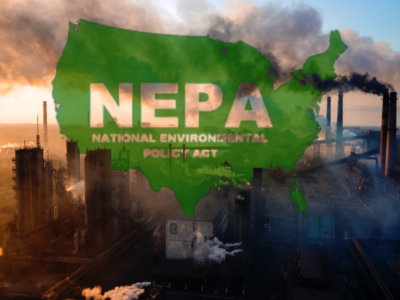NEPA
NEPA as a veto point
Environmental review can empower a wider range of actors to block or hinder government projects
This is the fifth in a series of posts on the reasons we might have environmental review. The first post is here. The second post is here. The third post is here. The fourth post is here. Judicial review to enforce NEPA ensures that agencies actually take environmental review requirements seriously, as opposed to producing …
Continue reading “NEPA as a veto point”
CONTINUE READINGCan NEPA change agency decisionmaking?
Environmental review can change agency incentives or culture
This is the fourth in a series of posts on the reasons we might have environmental review. The first post is here. The second post is here. The third post is here. Another pathway by which environmental review might change outcomes, even with no legally binding substantive components, is through changing internal agency decisionmaking. The …
Continue reading “Can NEPA change agency decisionmaking?”
CONTINUE READINGNEPA as a political tool
How NEPA can change environmental outcomes through political and public pressure
This is the third in a series of posts on the reasons we might have environmental review. The first post is here. The second post is here. A frequent critique of NEPA is that it is paperwork without purpose, and thus a waste of resources. How can a statute that has no substantive requirements, and …
Continue reading “NEPA as a political tool”
CONTINUE READINGNEPA as an environmental back-stop
NEPA can provide analytic coverage of environmental harms that are not covered under other statutes
This is the second in a series of posts on the reasons we might have environmental review. The first post is here. Why might we have an environmental review statute such as NEPA when we already have a range of other environmental protection statutes such as the Clean Air Act, the Clean Water Act, and …
Continue reading “NEPA as an environmental back-stop”
CONTINUE READINGWhy do we have NEPA?
Examining the reasons why we might have environmental review can inform reform efforts
Reform, or even elimination, of environmental review for federal agency actions under the National Environmental Policy Act (NEPA) is a hot topic in the policy world right now – particularly with the Trump Administration making a range of significant changes to try and reduce the scope of NEPA. But if we want to have a …
Continue reading “Why do we have NEPA?”
CONTINUE READINGEmergency!
The risks of politicizing emergency provisions in statutes and regulations
This article notes that the Army Corps of Engineers is going to try to use emergency designations to reduce or eliminate environmental requirements (environmental review under the National Environmental Policy Act (NEPA) and the Endangered Species Act (ESA)) for hundreds of projects that it is reviewing permits for. The projects include a number of large-scale …
CONTINUE READINGCareful what you wish for
The impact of eliminating CEQ’s NEPA regulations may be more onerous NEPA compliance
One of the many EOs issued by the new administration revokes the authority of the Council of Environmental Quality (CEQ), an office within the White House, to issue regulations implementing the National Environmental Policy Act (NEPA) that bind agencies in terms of what they must do for NEPA compliance. The EO follows on the heels …
Continue reading “Careful what you wish for”
CONTINUE READINGThe Seven County Case and the Limits of Causation Under NEPA
Analysis of causation under NEPA should be driven by the statute’s purpose of informed decisionmaking.
Our final article on the Seven Counties case before the Supreme Court, and how to think about causation and NEPA, is now out with the on-line companion to the Administrative Law Review, Accord. For those who don’t have time for the whole paper, here’s the abstract: This spring, the Supreme Court will decide Seven County …
Continue reading “The Seven County Case and the Limits of Causation Under NEPA”
CONTINUE READINGThe Top-Ten Lower Court Decisions on Environmental Law
Don’t let the headlines deceive you. It’s not just the Supreme Court that shapes environmental law.
The Supreme Court tends to get all the attention, but for every Supreme Court opinion on environmental law there are probably fifty opinions in the lower federal courts. Collectively, the lower courts have done fat least as much to shape the law than the Supreme Court’s occasional interventions.
CONTINUE READINGTrump’s War Against NEPA
One of Trump’s Executive Orders Heralds a Revolution in NEPA Practice
What’s going on here is pretty obvious, It’s not “improving environmental rules.” No, the title of the subsection is “Unleashing Energy Dominance through Efficient Permitting.” Anything that gets in the way of fossil fuel development – which is what Trump means by energy dominance – is going to get steamrolled. Including the environment.
CONTINUE READING





